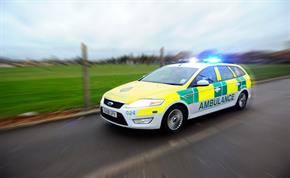
Meningococcal disease is the leading infectious cause of death in early childhood. Meningitis is the inflammation of the meninges that surround the brain and spinal cord. It can be caused by almost any microbe, but most commonly it is viral or bacterial. Viral meningitis can be very unpleasant but it is rarely life-threatening and most people make a full recovery.
Bacterial meningitis however is far more serious. According to the Meningitis Research Foundation most cases of bacterial meningitis in the UK and Ireland are caused by the meningococcal bacteria.
Bacterial meningitis is an infection of the surface of the brain meninges by bacteria that have usually travelled there from mucosal surfaces via the bloodstream. Meningococcal septicaemia – or blood poisoning – occurs when the bacteria in the blood multiply uncontrollably.
Meningococcal disease can appear as meningococcal meningitis or meningococcal septicaemia, or a combination of both; meningitis accounts for 15% of meningococcal disease cases, septicaemia for 25% of cases and the remaining 60% is a combination of both presentations. Septicaemia is the more life-threatening form of the disease and is more dangerous when there are no signs of meningitis.
Common symptoms and signs for bacterial meningitis and meningococcal septicaemia in children include:
More specific symptoms can include a non-blanching rash, altered mental state, shock, unconsciousness, and a toxic/moribund state.
Please be aware that some children and young people will present with mostly nonspecific symptoms or signs, and the conditions may be difficult to distinguish from other less important (viral) infections presenting in this way.
Children and young people with the more specific symptoms and signs are more likely to have bacterial meningitis or meningococcal septicaemia, and the symptoms may become more severe and more specific over time.
Treatment of bacterial meningitis (without non-blanching rash)
Transfer children and young people with suspected bacterial meningitis without non-blanching rash directly to secondary care without giving parenteral antibiotics.
Treatment of suspected meningococcal disease (meningitis with non-blanching rash or meningococcal septicaemia)
Give parenteral antibiotics (intramuscular or intravenous benzylpenicillin) at the earliest opportunity, either in primary or secondary care, but do not delay urgent transfer to hospital to give the parenteral antibiotics.
Withhold benzylpenicillin only in children and young people who have a clear history of anaphylaxis after a previous dose; a history of a rash following penicillin is not a contraindication.